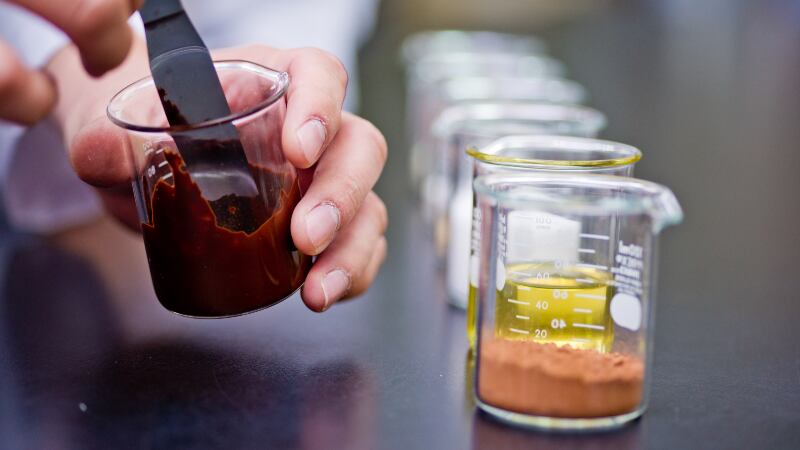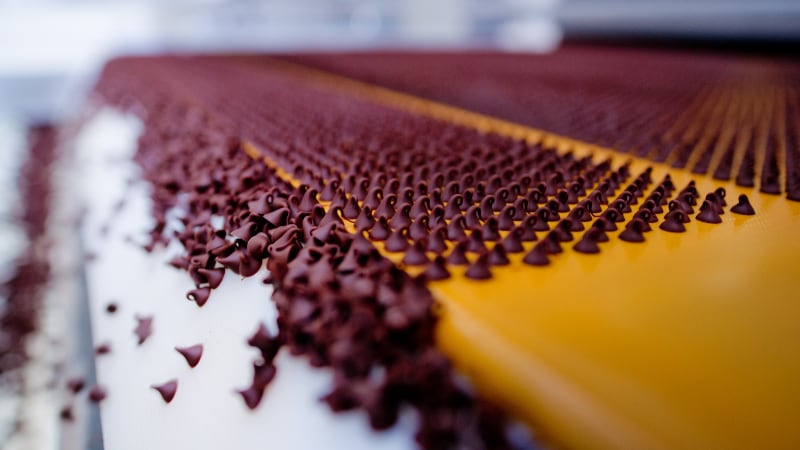Founded in 2003, Aalst Chocolate claims to be the first Singaporean brand to produce both chocolate couvertures and compounds. The firm was acquired by global food and agriculture firm Cargill in 2021.
Its products are catered specially to Asian consumers’ taste preferences and regional trends, while also specialising in customisation of chocolate products for B2B customers.
The firm supplies to industrial, retail and food service customers in the South East Asia (SEA) and Oceania markets, as well as China, India, Japan, and South Korea.
“We are seeing a growing appetite for chocolate among consumers across the Asia-Pacific (APAC) region, driven primarily by a large youth population, higher disposable incomes, and emerging trends such as prioritisation of indulgence, mindful eating, and sustainability.
“Taste is king for the Asian consumer. ‘Not too sweet’ is the best compliment when it comes to confectioneries, so reducing sugar is a key focus for us. People still want to enjoy tasty, flavourful treats, but they are also more conscious about quality, nutritional value, and source of foods that they consume,” said Xiaoling Liu, Managing Director of Aalst Chocolate and Indulgence Lead for Cargill’s Food Solutions (APAC).
In addition, Liu told FoodNavigator-Asia that while consumer trends are fast-evolving, Aalst foresees the “guilt-free treats” trend to stay for the long term.
Based on Cargill’s proprietary TrendTracker 2023 study, 81% of APAC consumers have tried to improve their overall health in ways such as choosing healthier food options.
At the same time, 55% of consumers said that it is important to indulge or pamper themselves on a regular basis.

To address the growing demand for better-for-you options that do not compromise on taste, Aalst is leveraging both its in-house R&D capabilities, and Cargill’s market insights and resources to innovate.
Currently, the company has a range of products under the Pâtissier Chocolate brand that are created with a nature-derived low-caloric sweetener, such as the 55% Dark Couverture (No Added Sugar).
Furthermore, the firm observed that younger consumers in Asia have the greatest desire and openness to new experiences and innovations.
“They are looking for unique flavours and formats, such as bite-sized products, as well as visual appeal. Speed of innovation is important for this group. From bake- and temperature-stable fillings to decorative options like our patented twin chips, we have chocolate for all major applications,” Liu added.
Innovation capabilities
Aalst’s two decades of experience in the sector has garnered itself in-depth knowledge of Asian palate preferences, yet intensive R&D remains a core focus of the firm.
Its R&D capacity is now supported by Cargill’s food innovation centres in four countries, namely Singapore, Shanghai, Beijing, and Gurgaon.
In Singapore, Aalst’s micro-factory allows small-batch production that facilitates customisation, boosts agility, and reduces waste. Recipes, taste profile, texture, shape, format, and packaging are customisable at the production stage to fulfil the precise requirements of each customer.
Additionally, the Chocolate Academy serves as a space for product experimentation, co-creation, and training. It is also a venue for in-house chefs to conduct workshops and demonstrations for distributors and customers to have a hands-on experience.
“With Aalst’s robust innovation capabilities and state-of-the-art manufacturing facility in Singapore, we are well-poised to continue supporting our customers in their product development needs and to work with them to co-create novel chocolate products.
“To ensure that our products meet the highest expectations and are safe for consumption, we continually invest in R&D and quality improvement, bringing in latest technologies from around the world, and adopting best practices to keep ahead of the curve in the competitive chocolate market.”
Win-win situation
According to Liu, Asia accounts for about 25% of global cocoa consumption.
“It is the fast-growing region in terms of volume and value, and especially stands out for its immense innovation potential. Within the next 10 years, Asia is expected to overtake North America as the second-largest chocolate market in the world.
“As part of Cargill, Aalst has expanded beyond a chocolate company to become a ‘bean to bar’ innovator, integrating and utilising Cargill’s extensive cocoa-sourcing capabilities across the globe to establish a stronger and more secure supply chain, which also meets the increasing demand for greater traceability and sustainably sourced ingredients. We see Aalst as a driving force that will shape the chocolate sector in Asia, and a partner of choice for innovation and growth.”
On the other hand, the acquisition of Aalst has also helped “fill the missing piece” in Cargill’s portfolio.
“Aalst completes Cargill’s chocolate footprint in this region, and is a complementary asset to our cocoa business in other parts of the world. Singapore’s proximity to other Asian markets, combined with the cost advantages and insights that we are getting, are also beneficial for categories such as sweetener and oil. Moreover, it has enabled us to reach out to a larger pool of customers and consumers.”
Liu is confident that Aalst would be able to expand beyond Asia. She cited the example of a super-white chocolate product that was initially developed for the Japanese market, which has since been well received in North America and Europe.


